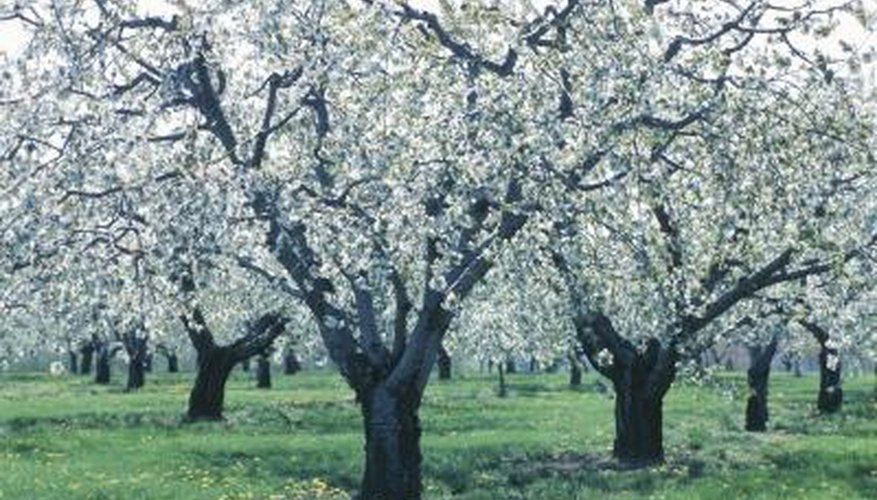If you have noticed a white foamy substance on your apple tree, you are seeing the predations of the woolly apple aphid. This insect primarily attacks apple trees, but it may also affect elm trees, pear trees and hawthorns.
Damage
Woolly apple aphids gravitate toward cuts and wounds on the trunks, limbs and twigs of the tree, where they gather to eat on the soft inner bark. They cause stress to the tree while preventing the wound from healing. They also transmit perennial apple canker.
- If you have noticed a white foamy substance on your apple tree, you are seeing the predations of the woolly apple aphid.
- Woolly apple aphids gravitate toward cuts and wounds on the trunks, limbs and twigs of the tree, where they gather to eat on the soft inner bark.
Appearance
Woolly apple aphids are soft-bodied insects that have piercing mouth parts. They produce long strands of white wax that cover and protect them from predators and pesticide spray, creating the white foam appearance that occurs on affected trees.
Control
Plant apple varieties that are resistant to woolly apple aphids, like Northern Spy and Malling Merton. According to Ohio State University, some of the chemicals that are used to control woolly apple aphids include chlorpyriphos, endosulfan, dimethoate and methyl parathion. Ohio State University further suggests that home gardeners can use diazinon or insecticidal soap.
